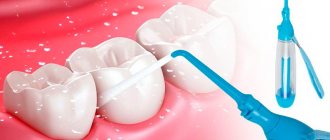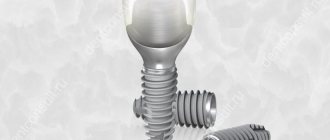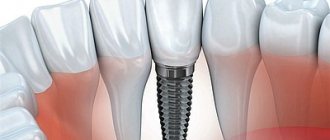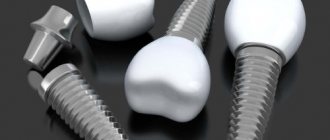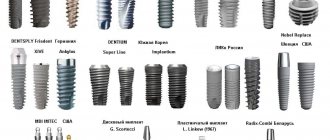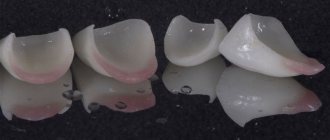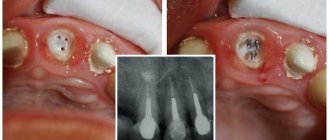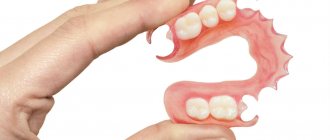Modern endoprostheses (breast implants) are complex high-tech products that are subject to very high demands.
Breast implants must be:
- Very durable and airtight,
- Durable,
- Biocompatible,
- Resistant to deformation and displacement.
The world's best manufacturers (Mentor, Silimed, Eurosilicon and some others) guarantee strict compliance with all these requirements. The implants they produce cannot be destroyed or flattened; even if you drive a truck over them, they do not cause rejection and do not require regular replacement. Of course, all of them have passed the most stringent tests and numerous quality checks and have the appropriate patents and certificates of the USA, the European Union and the Russian Federation.
Another confirmation of high quality and reliability is the lifetime warranty from well-known manufacturers that they provide for their products.
How to choose the shape and size of implants?
Modern endoprostheses are round or anatomical (teardrop-shaped). Many people believe that anatomical ones are better because they more closely match the natural shape of the breast. This is not so, or rather not always so.
To solve some problems (for example, for an accentuated increase in the volume of the upper pole of the breast), round implants are better suited. That is why, after the advent of anatomically shaped endoprostheses, plastic surgeons still did not abandon the use of round models. So, if you are thinking about choosing the shape of an implant, we recommend that you consult with specialists. Only a qualified plastic surgeon will be able to choose from hundreds of options the very model that will make your breasts ideal.
Well, what if you don’t yet know what size and shape of breasts you need? It’s not for nothing that they say “it’s better to see once.” Order modeling with one or several implants of different sizes, and you will be able to clearly assess the advantages of your future breasts, and in several options.
More information about the system of precise computer breast modeling can be found here.
Comparative characteristics of Mentor and Motive
Women who decide to use the services of a plastic surgeon usually choose which manufacturer’s product they should choose. This issue should be addressed as carefully as possible, without neglecting consultation with a doctor. You can collect information about all available manufacturers and read in detail the reviews of women who have undergone correction before.
It is necessary to consult a doctor
not so long ago announced itself, a feature of the implants of this company is the emphasis on creating the most realistic surface, which avoids encapsulation around silicone - this was a serious breakthrough in the field of plastic surgery.
Important ! Products from this manufacturer can not only recreate the absolutely natural shape of a woman’s breasts, but also have the ability to shift the center of gravity, which allows the shape to change naturally with body movements.
"Motiva" is an alternative to "Mentor"
Despite such obvious advantages, the products are extremely in demand among plastic surgeons and patients - specialists in the company’s laboratories are constantly improving prostheses and collaborating with leading specialists in the field of plastic surgery, harmoniously producing the most modern developments, based on practical experience in using certain products, through which is why new products are produced.
Mentor is extremely popular among surgeons and patients
How is the breast implant shell constructed?
The shell consists of several layers. This guarantees strength, eliminates “leakage” and even minimal evaporation of its contents. The surface of the implant shell can be smooth or rough.
For round implants this does not matter much, but for anatomical ones it is very important.
The rough surface prevents the implant from sliding and turning, keeping it in the correct position.
But not all textured (rough) surfaces fix the endoprosthesis in the tissues equally well. Implants from the world's leading manufacturers, used in the Doktorplastic clinic, are distinguished by good quality of fixation, so situations in which the implant moves are practically excluded.
Need a consultation?
Features of MENTOR® silicone implants (“Mentor”):
- Endoprostheses for breast correction are manufactured using Memory Gel, a patented filler gel. This silicone has shape memory, that is, the implant instantly restores its previous shape after any mechanical impact.
- The safety of these breast implants has been proven in numerous clinical studies, and the FDA approved MENTOR® products back in 1992. The company provides a guarantee for its products.
- Memory Gel has a special viscosity, which, on the one hand, allows you to recreate the natural density of the mammary glands, and on the other, does not leak if the membrane is damaged.
- To reduce the incidence of negative consequences of breast correction operations associated with the development of postoperative contracture, Mentor produces implants with both smooth and textured surfaces.
Thanks to a unique feature, the risk of capsular contracture is reduced: a natural fibrous membrane is formed around the implant, just like around any foreign body; if it becomes too dense, then this is reflected both in appearance (the implant is palpable and becomes noticeable, the breast is deformed) and on the patient’s health.
Polyurethane implants. What are they and why are they needed?
In addition to silicone, plastic surgeons may offer you to install polyurethane-coated breast implants. The quality and basic properties of polyurethane endoprostheses correspond to silicone analogues, but the price is slightly higher. Their main difference is that the polyurethane shell practically does not slip in the tissues of the body. Polyurethane implants are most often used in repeated plastic surgeries to completely eliminate displacement (rotation) of the endoprosthesis.
Questions and answers
If one of the implants moves to the side over time, is this harmful? Will any adjustments be necessary?
This is because the pocket stretches and falls apart over time. Surgery can be performed to suture it, but in general this does not cause harm even if no action is taken. To be sure, it is better to consult your doctor.
What to choose - silicone or saline solution?
Saline implants are smaller, more adjustable, leave a shorter scar, and can be used in women under 22 years of age. The advantages of silicone: it feels much more natural and safer. Well suited for thin patients with small breasts.
It is better to think in advance which implant to choose
“ uneven ” a couple of months after the intervention ?
This usually occurs in those who used the same implants for initial breast asymmetry. This cannot be changed - it is better to immediately consult with your doctor and agree on further recommendations with him.
Patient reviews
Sofia , Magnitogorsk
I got “Mentor” quite a long time ago - the doctor recommended a teardrop shape and an average profile for my figure. I don’t see any differences from natural breasts; silicone cannot be found even lying down.”
Evgenia , Irkutsk
“After I went through unsuccessful plastic surgery the first time, I collected my strength for a long time before performing the second one. However, the Mentor implants did not fail – even after several years the shape is excellent, others notice it.”
Patients enjoy the procedure
Valentina , Tomsk
“I specifically wanted these implants for their shape and texture. I saved for a long time for the operation, but finally my dream came true! After the intervention, I had to take care of myself for some time, wear special underwear on the doctor’s advice, but the rehabilitation is behind me, and I am very pleased.”
Types of implants
Modern implants have long ceased to be standard hemispheres filled with liquid. Today, surgeons select implants based on several characteristics:
- type of filler;
- desired breast shape;
- implant size;
- surface features and tactile sensations when palpating.
This allows the surgeon to fully realize the patient’s expectations from the operation. Each type of implant has its own disadvantages and advantages, which should be discussed with your doctor in advance.
Saline implants
Saline implants are the first prosthetics to appear. They consist of a dense shell containing saline solution, which is safe for body tissues, even if the implant is damaged and leaks. Today, such implants are considered obsolete; many clinics no longer use them in their work.
Key advantages of saline prostheses:
- low cost compared to others;
- filling after placement, which allows them to be placed with minimal incisions;
- safety against rupture and leakage.
Main disadvantages:
- low safety profile, there is a risk of ruptures;
- wear and tear over time due to tissue mobility;
- softness, sounds when moving;
- significant weight, threatening tissue sagging;
- when posing, a “washboard effect” is possible in certain body positions.
Silicone prostheses
Silicone prostheses are the most popular in modern clinics. Over the years, applications have changed significantly; today the latest models are used with silicone in the form of a gel, and the shell itself is much denser and safer.
There are several options for such implants:
- Standard (cohesive) ones, which help to imitate the body’s own tissue quite well. Highly cohesive ones are almost impossible to deform, but give the breast an unnatural feel to the touch.
- Soft touch dentures are filled with a soft gel, similar to jellied meat with a memory effect, which is why they expand well after compression.
The advantages of this type of prosthesis:
- give breasts a natural look if you choose the right size;
- indistinguishable to the touch from fabrics;
- have a lifetime warranty;
- rarely form reactions of surrounding tissues with the growth of scar tissue;
- have a memory effect.
Disadvantages of products:
- full incisions are required for staging;
- It is difficult to determine the location of the damage by palpation; an MRI is required.
Hydrogel implants
Hydrogel implants are one of the modern types of prostheses. They are filled with a natural substance - carboxymethyl cellulose. They have a number of advantages compared to the previous ones:
- practically do not provoke allergies, inflammation and rejection reactions;
- do not provoke tissue damage if the contents get out (the hydrogel breaks down into glucose, water and carbon dioxide);
- do not interfere with mammography;
- safe for the body.
Disadvantages of hydrogel products:
- high cost of implants;
- gradually decrease in volume due to the slow release of filler through the shell.
Reasons for replacing breast implants
It is difficult to determine exactly how long a breast implant will be used after its installation. Even an experienced surgeon cannot predict this. After 10-12 years, it is worth having a consultation with a plastic surgeon and discussing with him whether a repeat operation is necessary and whether there are indications for it.
Modern materials and technologies make it possible to extend the service life of implants to life, but often indications for re-plasty arise not only because of the wear of the prostheses. Therefore, doctors determine a number of indications for re-intervention, in which they replace implants with new ones, including those made of other materials, shapes or sizes.
Aging of implants
Any products have their own service life - they gradually age, especially if they are saline-filled implants. The rate of change in the prosthesis itself depends on various factors, including the patient's immune system's response to a foreign substance, the location of the implant, age, activity level, and external influences on the breast. When materials age, there is a higher chance of developing complications due to shell destruction, shape deformation, volume reduction due to leakage and tissue reaction to the leaking composition.
Changing aesthetic preferences
Sometimes women want to change their breast size or shape, which requires a different type of prosthesis. In these cases, there are indications for re-plasty with the replacement of implants with new ones. But a repeat operation is possible only after a certain period of time after the first intervention, so that there is time for tissue restoration, elimination of swelling and healing of scars at the incision sites.
Age-related changes in body tissue
With age, the contours of the body, the ratio of muscle and fat tissue change, the elasticity of the skin and ligaments decreases, which leads to sagging of the prosthesis and a change in the shape of the breast. In this case, the implant itself does not change in any way, but the tissues surrounding it undergo age-related, hormonal, and metabolic changes that require correction. In addition, the condition of the breasts after prosthetics can be affected by the process of breastfeeding, tissue changes during pregnancy, sudden fluctuations in weight, wearing inappropriate underwear and many other external factors.
Formation of complications
The most serious reason why a repeat operation is needed with complete removal or replacement of prostheses even before the end of their service life is the development of complications. Sometimes no one can predict how the body will react to a foreign body; the implant may be rejected, damaged, deformed, and then efforts must be made to eliminate all complications by performing re-plasty.
Photos before and after
Photos before and after installation of implants Mentor No. 1
Photos before and after installation of implants Mentor No. 2
Photos before and after installation of implants Mentor No. 3
